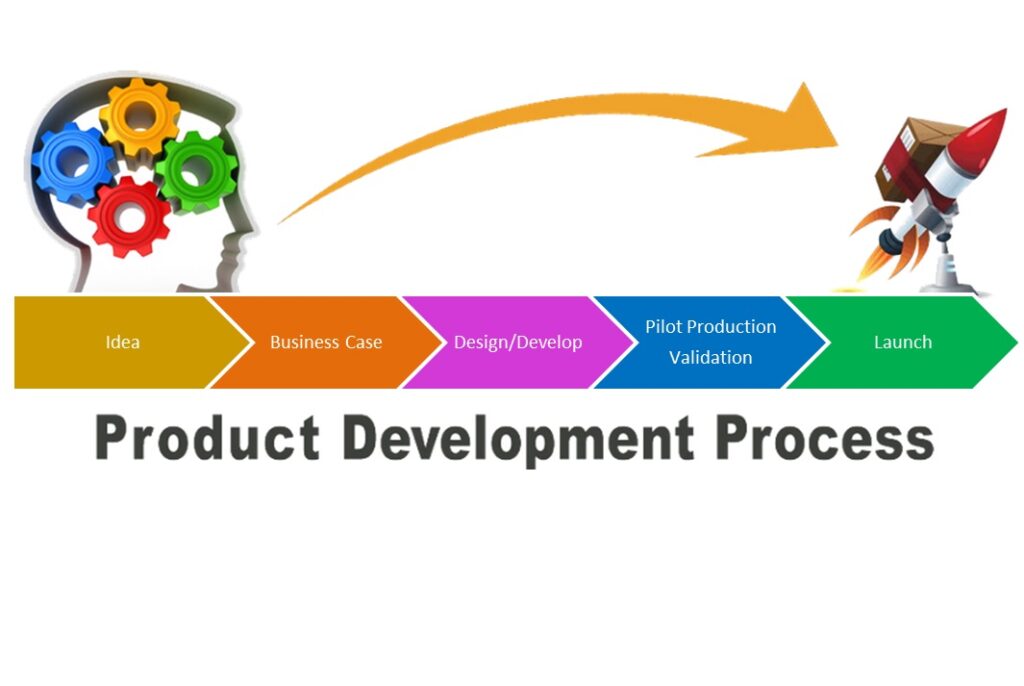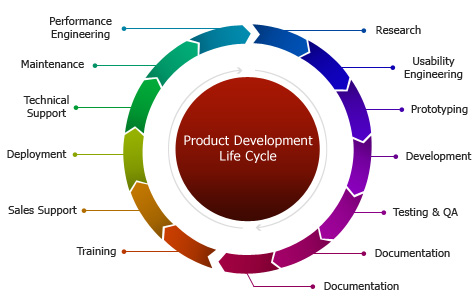Introduction to New Product Introduction (NPI)
Every year there are huge trade shows where companies reveal all the latest new products in hopes to draw interest from distributors, dealers, and prospective customers. There are Auto shows, Electronics shows, and Agricultural shows just to name a few. Most manufacturing companies participate in one or more of the various product expos held around the globe. Companies are continually improving existing products or introducing the latest “all-new” models. What many people do not see or even think about is all the work that was involved in the design, development, and introduction of the new products. The introduction of new products that consumers want requires correct and thorough information, time, and dedicated resources from the entire organization. The companies that are most successful at the development and launch of a new or revised product follow an organized and well-planned process. New Product Introduction (NPI) helps bring all the right resources together at the right time.

What is New Product Introduction (NPI)
A New Product Introduction (NPI) program encompasses all the activities within an organization to define, develop and launch a new or improved product. The product could be something tangible, as in the case of a new model automobile, or intangible as in a particular service offered. The acronyms NPI (New Product Introduction) and NPD (New Product Development) are used interchangeably by many organizations. In some cases, NPI activities begin after design and development and merely deal with the product production launch and marketing. The NPI process can vary greatly from organization to organization. In some cases, it can actually vary within different divisions of the same company. For an NPI process to succeed it must have the full active support of upper management in all divisions and departments. An effective NPI program involves a large amount of cross-functional communication and teamwork.
Why Implement New Product Introduction (NPI)
Most successful organizations realize the importance of implementing an NPI process. In today’s highly competitive market, companies must develop the right product, at the right time and at the right cost. Developing and following a robust NPI process can denote the difference between success and failure. Some of the many advantages of New Product Introduction include (but are not limited to):
- Reduced Development Cost: By incorporating the Voice of Customer (VOC) into the early stages of the project, the design team can avoid late design changes, multiple revisions, and repeated costly validation testing
- Faster Time to Market: With a reduction in development time, the product will reach the consumer and begin generating revenue sooner.
- More Efficient Manufacturing: Through the effective use of Design for Manufacturing and Assembly (DFM/DFA) best practices, products are designed with the process in mind.
- Improved Product Quality: The NPI process incorporates tools targeted at ensuring the product meets customer needs and the process is capable of producing quality products consistently.
How to Implement New Product Introduction (NPI)
A New Product Introduction process can consist of various phases or gates. The phase gate system keeps management apprised of the project progress and assures all activities are completed on time. The example is shown below consists of six phases:
- Define
- Feasibility
- Develop
- Validate
- Implement
- Evaluate
Each phase of the NPI process feeds into the next. Many organizations look at the process as having a beginning (Define) and an end (Evaluate). Some variations combine Define and Feasibility into one phase and Develop and Validate into another. All too many companies leave the Evaluate phase out completely, thus losing valuable information for future projects. The fact is, the NPI process is not a straight line. Instead, it is an endless circle or loop. The hardest phase to complete for many organizations is the Evaluate phase. Once the product is on the market, we rush to the next one and then the next, failing to feed lessons learned into subsequent projects.
At each phase of an NPI project, there are inputs and outputs. Also, there are various requirements, tools, documentation, and processes within each phase. The following sections will cover each of the project phase requirements.
Define
During the Define Phase, the product’s functional / performance requirements are defined along with the VOC. The Marketing and Product Management divisions of an organization are usually the primary sources of this information. The product requirements are converted to design specifications, often using the Quality Function Deployment (QFD) process. The design specifications are integrated into one or more concepts to be reviewed by the project team. The management team should develop a Project Charter. The information contained in the charter should include, but is not limited to, the following:
- Background Information
- Primary Objectives
- Project Scope
- Key Deliverables and Dates
- Project Budget
- Identify Stakeholders and Sponsor
- Identify Project Manager and Define the Team
- Review Possible Constraints / Assumptions / Concerns / Risks

In addition to the design concepts and the project charter, an initial business case is developed during the defined phase. The business case should identify the market or customer and the competition. Thorough Cost-Benefit, Sensitivity, Risk and Contingency Analysis’ should be contained within the business case along with clear definitions of success and failure. The business case is reviewed at each phase of the project.
Feasibility
The purpose of the Feasibility Phase is to allow management an opportunity to evaluate the project’s potential for success. During the Feasibility Phase, the project team reviews the product design concepts and selects the design that best fulfills the previously defined requirements. The business case is reviewed and refined. The outputs or deliverables of the Feasibility Phase should include (but are not limited to):
- Boundary Diagram: A graphic tool defining the scope of the project, along with internal and external interactions
- Preliminary Design Concept: Includes a high-level Bill of Material (BOM)
- Process Flow Diagram: Outline the basic processes required for production
During the gate review, the project team presents all applicable information regarding the selected design concept, proposed location, and method of manufacture, including strengths and risks of the project, an updated business case, and the current strengths and risks of the project. The output or result is a determination of whether the project and proposed product design should move forward to the next phase, be redesigned, or be abandoned altogether.
Develop
The Develop Phase activities are focused on advancing the product design features and characteristics into a more defined form while assessing risk in the design. A validation plan is also developed during this phase. A comprehensive review of the design is performed to evaluate the robustness of the design and its ability to meet customer and performance requirements. DFM/A activities are initiated before design completion or design freeze. Also, the process required for production is being evaluated, including location, space requirements, equipment, and preliminary process mapping. Furthermore, other business units are being pulled into the project to address any operational concerns such as material forecasting, supplier selection, and development, etc. Some of the common outputs of the Develop Phase are listed below:
- 3D Models of the Design
- Concept Level Drawings
- Bill of Materials (BOM)
- Design Failure Mode and Effects Analysis (DFMEA)
- Design Verification Plan and Report (DVP&R)
- DFM/A Reviews
- Manufacturing Preliminary Footprint
- Safety / Regulatory Audit Reports
- Preliminary Engineering Design Freeze
During the gate review, the project team presents updated information about the design, project timeline, risk assessments, and an updated business plan or report of financial status. The management team will determine if the project should move to the next phase or refine the design or test plan further before proceeding.
Validate
During the Validate Phase, product analysis and testing are performed. Some testing cannot occur until prototype parts are available. Design changes are possible due to the results of validation testing but very costly. Also, the manufacturing process is developing and process risk is being analyzed and addressed. The major steps of the manufacturing process are being developed and reviewed. Product analysis and the testing schedule are being developed and prototype parts completed. Some of the common outputs of the Validate Phase are listed below:
- Packaging Standards
- Production Level Drawings
- Design Validation Plan and Report (DVP&R)
- Process Flow / Process Mapping
- Process Failure Modes and Effects Analysis (PFMEA)
- Review Supplier Production Part Approval Process (PPAP) Submissions
- Prototype – Process Work Instructions
- Fixture / Tooling Creation and Build
- Prototype Builds
Upon completion of the activities conducted during Validate Phase, the team should review the project with the owner and stakeholders. The purpose of this gate review is to gain management approval to move the project forward to the next phase and keep lines of communication active.
Implement
During the Implement phase of the NPI process, the manufacturing processes are refined and validated through pilot builds and capability studies. Also, process documentation and quality controls are being developed and implemented. Furthermore, various other activities are on-going including, but not limited to, the following examples:
- Development of Manuals
- Pricelist / Catalogue / Quote Tool
- Process Work Instructions and Standard Work
- Approval of Supplier PPAP Submissions Internal Training of Associates
- External Training of Sales, Dealers, etc.
- Production Control Plans
- Significant Production Run / Pilot Build
- Process Capability Studies / Statistical Process Control (SPC)
- Packaging Evaluations
- Final Safety / Regulatory Review
Evaluate
The Evaluate Phase timing can vary depending upon the organization, the product being produced or the service provided. It is generally initiated 30 to 60 days following production launch. The Evaluate Phase serves several purposes in the product introduction process. This phase provides the team an opportunity to tie up any remaining documentation tasks, review process performance, and collect customer feedback on the new product.
The team should also take this opportunity to review any lessons learned and document them for use in future projects. One tool that has proven effective for some organizations is the TGR/TGW exercise. TGR/TGW stands for “Things Gone Right / Things Gone Wrong”. During this exercise, the team gathers to take an objective look at the project. Discussion revolves around all the things that went well and the things that may not have gone well or could have been improved. The causes of the TGWs are examined and countermeasures developed to prevent re-occurrence in the next project. The TGRs should be carried over to future projects as a continuous improvement effort within the NPI process. The integration of lessons learned into future projects essentially closes the loop in NPI, helping to retain valuable information and develop a more robust and progressive NPI process.

